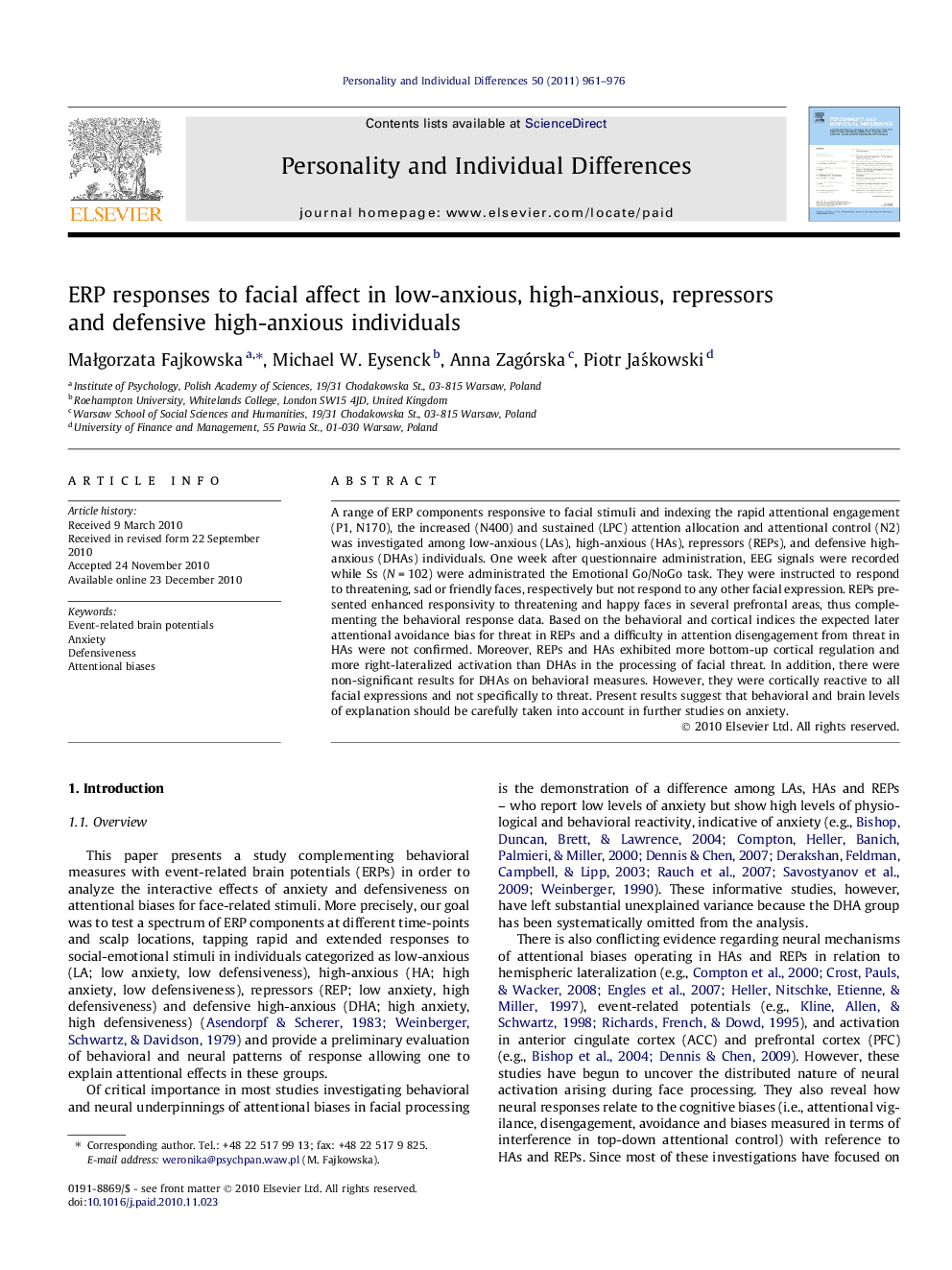| Article ID | Journal | Published Year | Pages | File Type |
|---|---|---|---|---|
| 891527 | Personality and Individual Differences | 2011 | 16 Pages |
A range of ERP components responsive to facial stimuli and indexing the rapid attentional engagement (P1, N170), the increased (N400) and sustained (LPC) attention allocation and attentional control (N2) was investigated among low-anxious (LAs), high-anxious (HAs), repressors (REPs), and defensive high-anxious (DHAs) individuals. One week after questionnaire administration, EEG signals were recorded while Ss (N = 102) were administrated the Emotional Go/NoGo task. They were instructed to respond to threatening, sad or friendly faces, respectively but not respond to any other facial expression. REPs presented enhanced responsivity to threatening and happy faces in several prefrontal areas, thus complementing the behavioral response data. Based on the behavioral and cortical indices the expected later attentional avoidance bias for threat in REPs and a difficulty in attention disengagement from threat in HAs were not confirmed. Moreover, REPs and HAs exhibited more bottom-up cortical regulation and more right-lateralized activation than DHAs in the processing of facial threat. In addition, there were non-significant results for DHAs on behavioral measures. However, they were cortically reactive to all facial expressions and not specifically to threat. Present results suggest that behavioral and brain levels of explanation should be carefully taken into account in further studies on anxiety.
